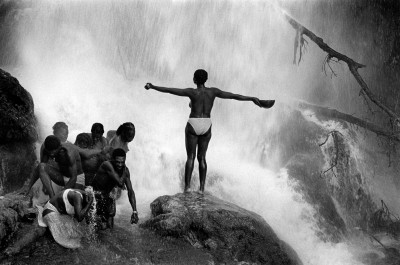
A view of Haitian rites of passage through life
Four years ago last Sunday, Haiti suffered one of the worst disasters in its already troubled history, the 7.0 earthquake that killed hundreds of thousands and upended millions of lives. But the Haitian spirit didn’t die; in fact struggle, and overcoming adversity, has shaped much of Haitian life and has had a unique impact on its art and religion. The world’s first black republic was supposedly started at a vodou ceremony, for instance, in 1791.
Vodou is itself a unique Haitian creation, a mixture of African spiritual beliefs with Catholicism, the rites of which the Spanish photographer Cristina Garcia Rodero started documenting over a decade ago. The results of what she captured with her camera are displayed in “Rituales en Haiti,” an exhibit at the MDC Museum of Art + Design in the Freedom Tower.
Her black and white photographs reveal the importance of vodou in everyday life, how it is an essential aspect to how people navigate the ups and downs of the world. Water rituals, we see, play in important role, the process of submerging oneself has purifying effects. And sacrifice also emerges in these images as a crucial element; surviving, it seems, often requires sacrifice.
Vodou has for far too long been considered a strange, cultish religion to many in the developed world, simplified as a belief in zombies or other such exaggerated expressions. As these photographs show, vodou is part of the walk through life in Haiti. The spiritual world is not separated from the physical one, to be only recognized once a week in a designated temple, it is ever present in the land, the flora and fauna, the souls living and past.
This series of photographs – more than 100 – was first exhibited at the Venice Biennale in 2001, and makes its inaugural U.S. appearance here in Miami.
“Rituales en Haiti” runs through March 29 at the MDC Museum of Art + Design, in the Freedom Tower, 600 Biscayne Blvd., Miami; free.
Recent Content
-
Artsarticle ·
-
Artsarticle ·
-
Artsarticle ·

